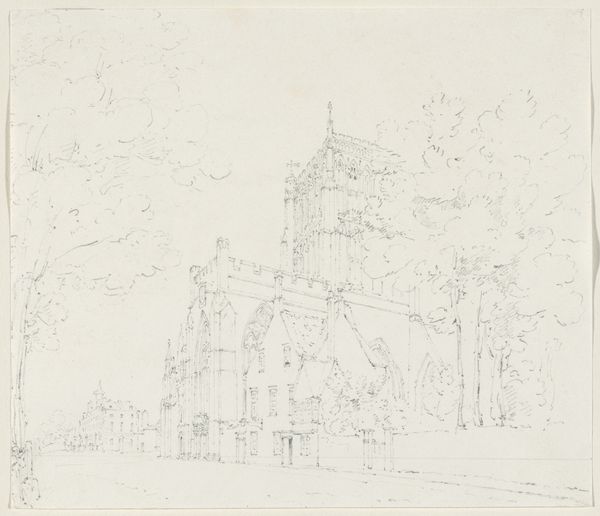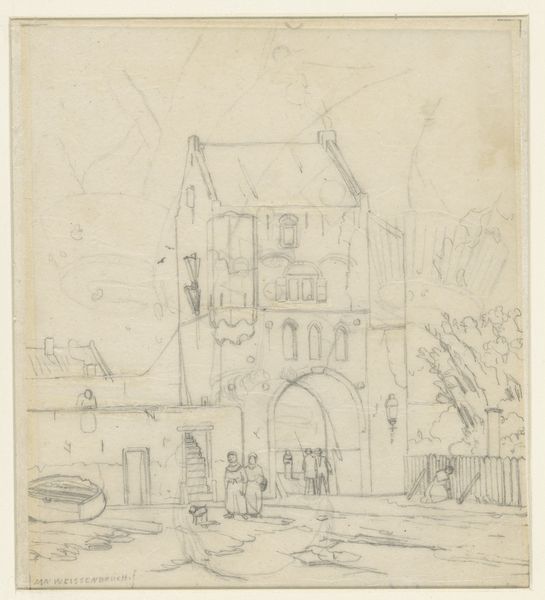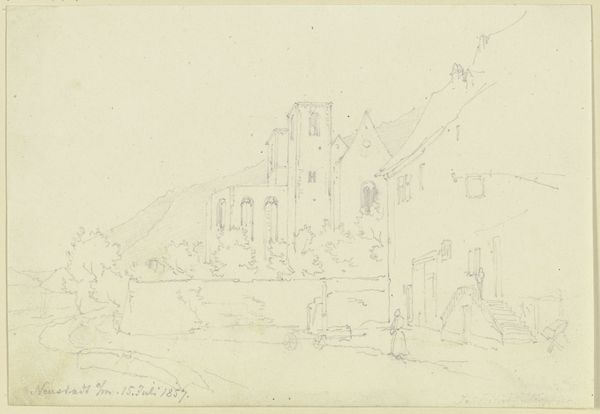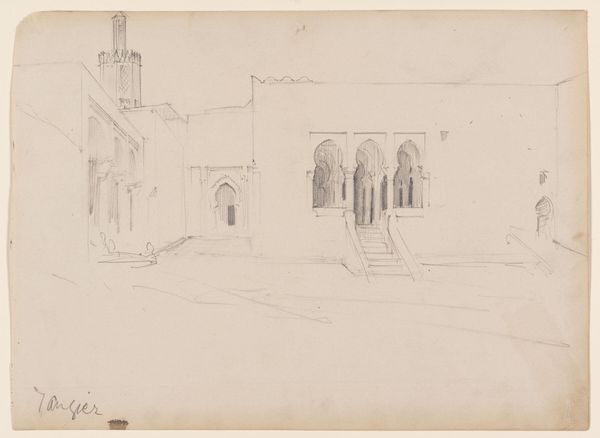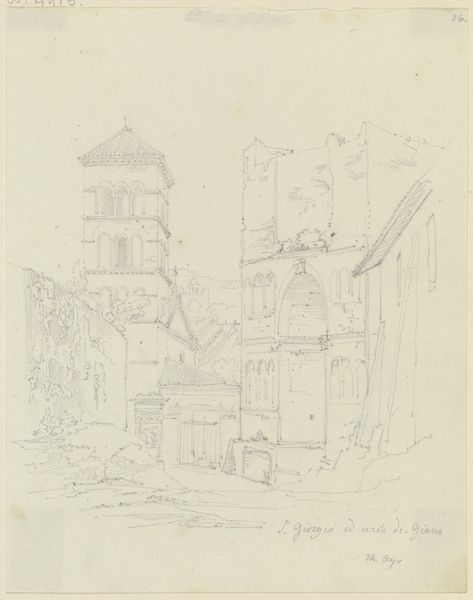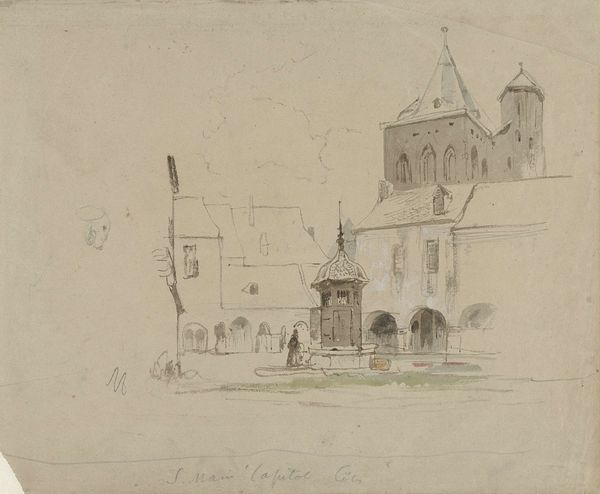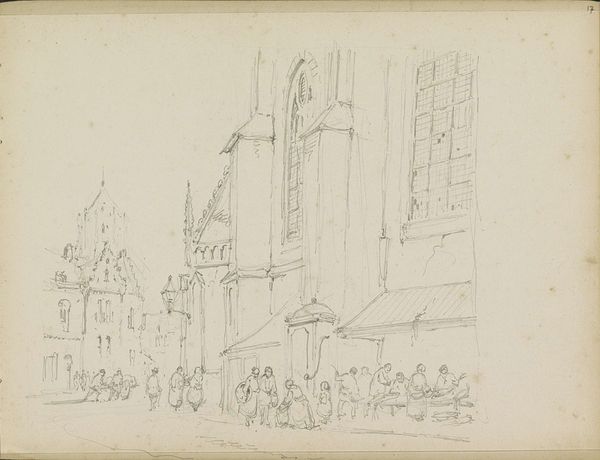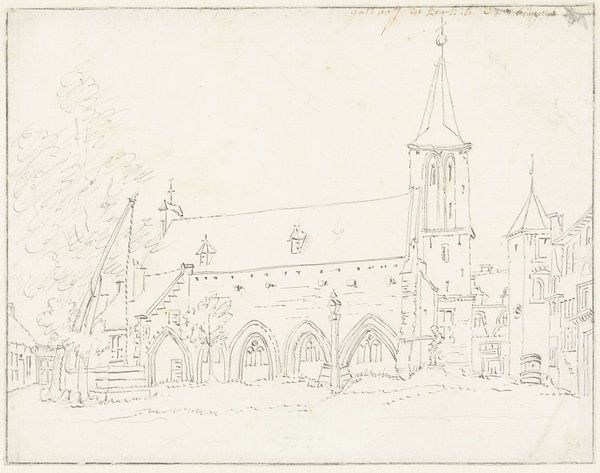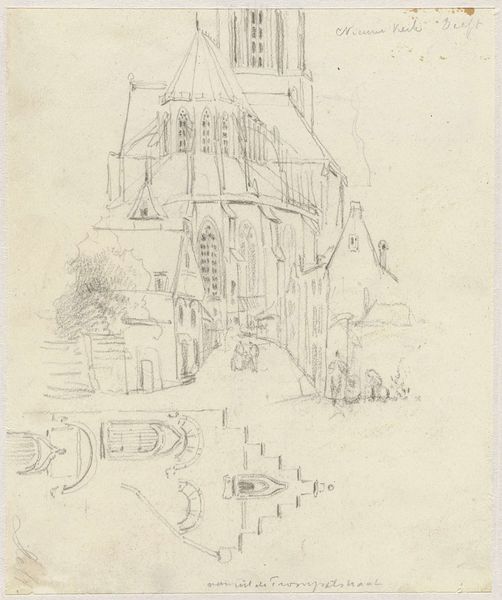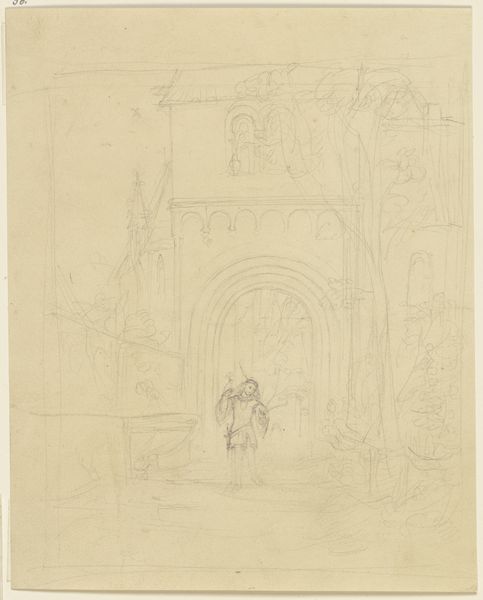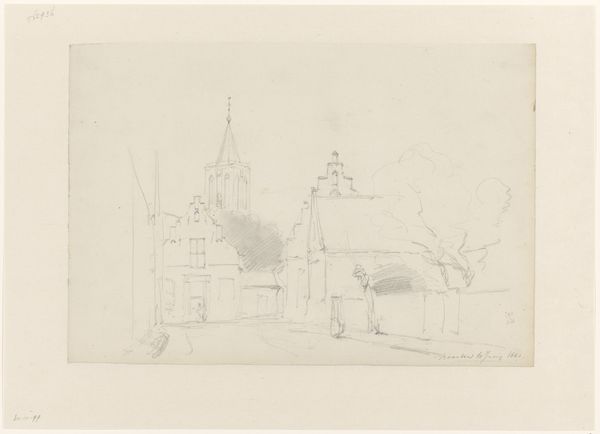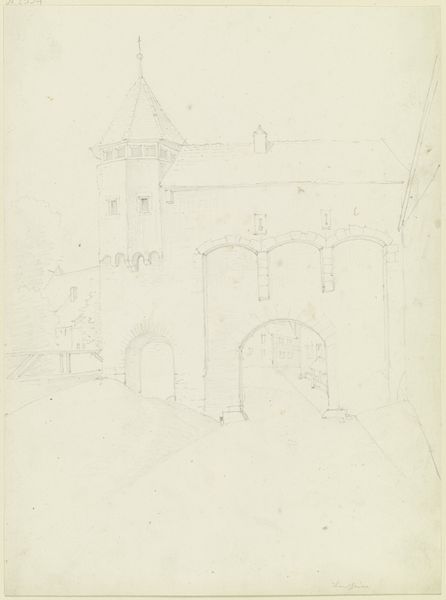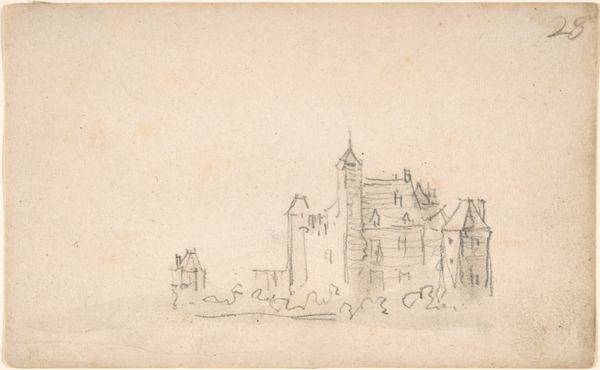
drawing, pencil
#
drawing
#
pencil sketch
#
landscape
#
pencil
#
cityscape
#
realism
Dimensions: height 204 mm, width 223 mm
Copyright: Rijks Museum: Open Domain
Editor: This is "Sketch of a cityscape" by Adrianus Eversen, sometime between 1828 and 1897, created with pencil on paper. There's a tentative, almost fragile quality to the drawing... What draws your attention when you look at this sketch? Curator: What strikes me is the way Eversen uses realism to document a specific place and time, yet also hints at broader social dynamics. Look at the details he chooses to include, the architectural styles—they tell a story about the values and power structures embedded in urban development during that period. Who was afforded visibility in that city? Editor: I hadn’t thought about it that way. It’s so easy to see just a pretty drawing of old buildings. Curator: Exactly! Eversen, whether consciously or not, provides us with a glimpse into a world defined by class and perhaps even exclusion. Consider, too, that the cityscape was also undergoing tremendous transformation. Is this drawing an act of preservation? Is it critiquing the speed and focus of capital interests at the time? Editor: So you're saying the sketch, even though it’s “just” a cityscape, can reflect the socio-political landscape? Curator: Absolutely. How do you see the absence of people influencing your reading? Does their erasure make the cityscape seem cold, clinical? How might this relate to the era's focus on industrialization and perhaps even a sense of alienation? Editor: That's a powerful way to look at it. I’m beginning to see how much historical context can be woven into even the simplest of images. Curator: Precisely. Art is never created in a vacuum; it reflects the values and contradictions of its time, offering insights into both the visible and the invisible forces shaping society. We are left to wonder about all of the individuals whose stories are not captured.
Comments
No comments
Be the first to comment and join the conversation on the ultimate creative platform.
